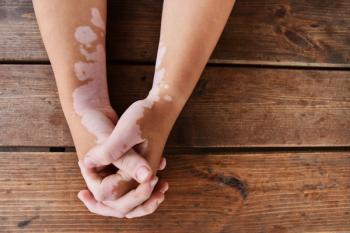
- Consultant for Pediatricians Vol 9 No 6
- Volume 9
- Issue 6
Arm Swelling and Erythema Following Hymenoptera Sting
Four hours after a 12-year-old boy was stung by a honeybee on his right middle finger, he noticed localized hand swelling, erythema, and tenderness. The following morning, his entire hand was swollen and erythematous, with contiguous erythema on the medial aspect of his forearm and arm. Although the arm was tender to palpation, he was afebrile and felt well. Because of an initial concern for cellulitis or lymphangitis, he was given intravenous antibiotics and antihistamines and was admitted overnight for observation.
Four hours after a 12-year-old boy was stung by a honeybee on his right middle finger, he noticed localized hand swelling, erythema, and tenderness. The following morning, his entire hand was swollen and erythematous, with contiguous erythema on the medial aspect of his forearm and arm. Although the arm was tender to palpation, he was afebrile and felt well. Because of an initial concern for cellulitis or lymphangitis, he was given intravenous antibiotics and antihistamines and was admitted overnight for observation.
Radiographs of his hand, forearm, arm, and shoulder showed soft tissue swelling. His erythrocyte sedimentation rate was 12 mm/h, and his C-reactive protein level was less than 0.2 mg/L. A complete blood cell count was normal, and results of blood cultures were negative. All symptoms improved markedly by the following day, and the patient was discharged on a 7-day regimen of oral clindamycin. The patient's symptoms resolved completely within 4 days.
Insects in the order Hymenoptera include yellow jackets, hornets, wasps, honeybees, sweat bees, and imported fire ants. Reactions to stings by these insects fall into 1 of 3 categories: local reactions (also called normal reactions), large local reactions, and anaphylaxis.1 Local reactions involve swelling, erythema, or pain near the sting site; symptoms usually resolve within a few hours.
Large local reactions (as seen in this boy) involve swelling over a large area (greater than 10 cm) and can extend past more than 1 joint. Symptoms generally peak at 24 to 48 hours and can last up to 1 week. Many cases are IgE-mediated; others may involve a chemically mediated inflammatory response. Large local reactions require only observation, but antihistamines and possibly systemic corticosteroids can be used if swelling is extensive. Children who have large local reactions have a 5% chance of a more serious reaction with future stings.2
Because large local reactions to a Hymenoptera sting may involve the progression of a red, streaking rash, they can easily be confused with cellulitis or bacterial lymphangitis (as was the case here). However, bacterial cellulitis or lymphangitis secondary to a Hymenoptera sting is extremely rare.
References:
REFERENCE:
1.
Moffitt JE, Golden DB, Reisman RE, et al. Stinging insect hypersensitivity: a practice parameter update.
J Allergy Clin Immunol
. 2004;114:869-886.
2.
Golden DB. Insect sting anaphylaxis.
Immunol Allergy Clin North Am
. 2007;27:261-272, vii.
The opinions or assertions herein are the private views of the authors and are not to be construed as reflecting the views of the Department of the Army, the Department of the Air Force, or the Department of Defense.
Articles in this issue
over 15 years ago
Atypical Dermatitis Herpetiformisover 15 years ago
Extensive Miliaria Crystallinaover 15 years ago
Developing Pattern Recognition: The Key to Pediatric Dermatologyover 15 years ago
Drug Eruptions: The Benign-and the Life-Threateningover 15 years ago
Tips for Identifying and Treating Nail Disordersover 15 years ago
Black-Spot Poison Ivyover 15 years ago
Can You Distinguish Among These Diaper Dermatoses?over 15 years ago
Unexplained Bruising: Weighing the Pros and Cons of Possible CausesNewsletter
Access practical, evidence-based guidance to support better care for our youngest patients. Join our email list for the latest clinical updates.














